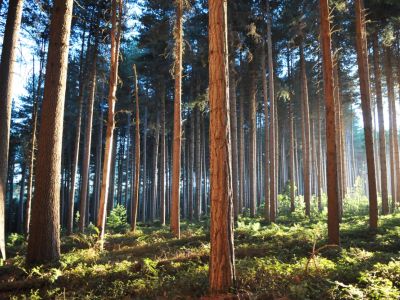Facts About Sugar Pine Trees
Sugar pines are the tallest and biggest of the pine tree clan, second only to the giant sequoia in sheer bulk. These pine trees can grow to 200 feet (60 m.) tall with a trunk diameter of 5 feet (1.5 m.) and live past 500 years. Sugar pines bear three-sided needles, about 2 inches (5 cm.) long, in clusters of five. Each side of each needle is marked by a white line. The pine tree seedlings grow deep taproots at a young age. Their early growth is slow, but it becomes more rapid as the tree gets older. Sugar pine trees support some shade when they are young but become less shade tolerant as they age. Trees that grow in stands with taller specimens decline over time. Wildlife appreciate sugar pines when the trees are young, and even larger mammals use dense stands of seedlings as cover. As the trees grow taller, birds and squirrels build nests in them, and tree cavities are occupied by woodpeckers and owls. Lumbermen also prize the sugar pine tree. They admire its wood, which is light-weight but stable and workable. It is used for window and door frames, doors, molding, and specialty products like piano keys.
Where Do Sugar Pine Grow?
If you hope to see a sugar pine, you may ask “Where does sugar pine grow?” Emblematic of the Sierra Nevada, sugar pines also grow in other parts of the west. Their range stretches from the Cascade Range in Oregon through the Klamath and Siskiyou Mountain and into Baja California. You will generally find these mighty trees growing from 2,300 to 9,200 feet (700-2805 m.) above sea level in forests of mixed conifers.
How to Identify Sugar Pine
If you are wondering how to identify sugar pine, it is not very difficult once you know what you are looking for. You can readily identify sugar pine trees by their massive trunks and large, asymmetrical branches. The branches dip slightly from the weight of huge, woody cones. The cones grow up to 20 inches (51 cm.) long, with straight, thick scales.
